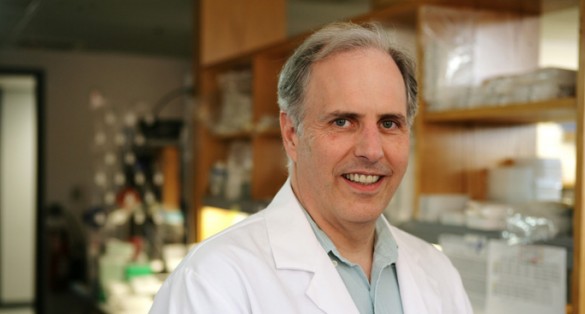A team of Vanderbilt Center for Human Genetics Research (CHCR) investigators and colleagues from around the world are releasing findings from the largest study to date seeking to identify genes that might increase the risk of autism.
Their findings, which identify two new genetic links that may predispose people to the brain disorder, are being released in the Feb. 18 online edition of Nature Genetics, one of the world‘s most prestigious research publications.
Vanderbilt CHGR investigators James Sutcliffe, Ph.D., and Jonathan Haines, Ph.D., teamed with over 120 scientists from more than 50 institutions representing 19 countries to form an unprecedented international consortium of researchers, the Autism Genome Project (AGP).
“We recognized that the greatest hope for overcoming the complexity of finding these genes was to pool our resources and family DNA samples,” Sutcliffe said.
Autism is a severe developmental disorder that affects approximately one in 150 children, and its cause is largely genetic in origin. Experts believe that many genes may combine together to cause susceptibility to this condition.
The consortium leveraged the unprecedented statistical power generated by its unique sample set by using “gene chip” technology to look for genetic commonality in autistic individuals culled from almost 1,200 families.
The AGP also scanned DNA from these families for copy number variations (CNV), or sub-microscopic DNA insertions and deletions that scientists believe might be involved with this and other common diseases.
“We now suspect that Copy Number Variation is another genetic factor contributing to the development of autism,” said Sutcliffe.
The innovative combination of these two approaches implicates a previously unidentified region of chromosome 11, and neurexin 1, a member of a family of genes believed to be important in neuronal contact and communication, among other regions and genes in the genome.
The neurexin finding, in particular, highlights a special group of neurons, called glutamate neurons, and the genes affecting their development and function, suggesting they play a critical role in autism spectrum disorders.
“This is an important step toward understanding how genetics is involved in autism,” said Haines, director of the Center for Human Genetics Research at Vanderbilt and one of the participants in the study.
“Now we have our best clues yet as to which genes might be involved. The next step will be to study these genes in detail to determine which ones really influence autism.”
The National Institutes of Health and Autism Speaks, a non-profit organization dedicated to increasing awareness of autism, funded the project.
Media contact: Craig Boerner, (615) 322-4747
craig.boerner@vanderbilt.edu















